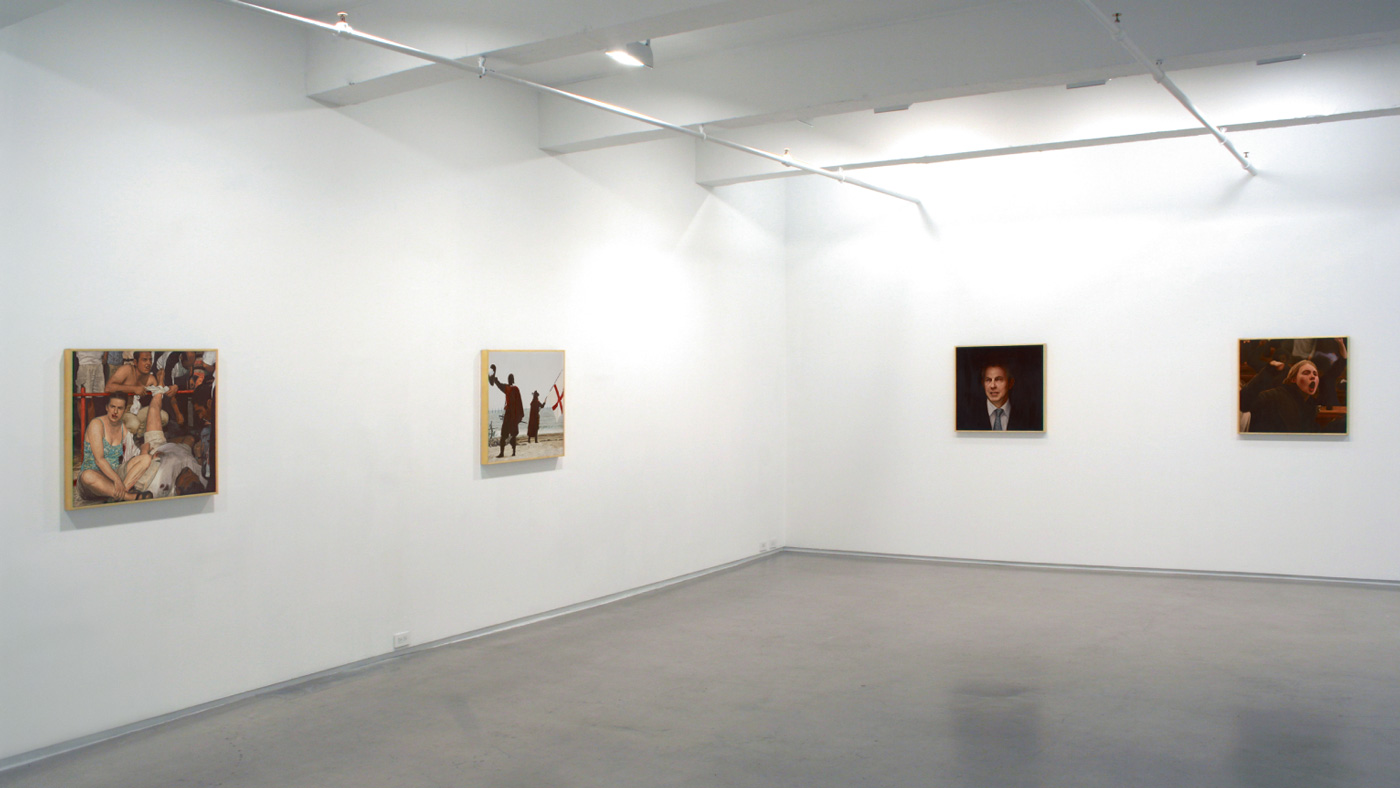The Economist Shuffle
2006 – 2008

“Disputes about beauty might perhaps be involved in less confusion, if a distinction were established, which certainly exists, between such objects as are beautiful, and such as are picturesque—between those, which please the eye in their natural state; and those, which please from some quality, capable of being illustrated in painting.”
—William Galpin, On Picturesque Beauty, 1792“ ‘Need I now explain,’ interrupted Mr. Hamilton, ‘why an object peculiarly and strikingly ugly, is picturesque? Were this figure, just as you saw him, to be expressed by a painter with exactness and spirit, would you not be struck with it, as you were just now in nature, and from the same reasons? What indeed is the object of an artist, in whatever art? Not merely to represent the soft, the elegant, or the dignified and majestic; his point is to fix the attention; if he cannot by grandeur or beauty, he will try to do it by deformity: and indeed, according to Erasmus, ‘quae natura deformia sunt, plus habent et artis et voluptatis in tabula.’”
—Uvedale Price, A Dialogue on the Distinct Characters of the Picturesque and the Beautiful, 1801
The images in Yishai Jusidman’s newest series come from media thumbnail prints lifted from the “The World this Week” section in The Economist magazine. For a few years now, he says, his selected imagery has rested solely on his own speculation that certain pictorial aspects of the 1.5 x 1.5 inch photograph may bring about a good painting. Since there is no escape from the associations generated by what is illustrated in the pictures, from the Paris Riots to Mexicans crossing the Rio Grande, the fleeting drama of everyday events is seized and clutched in Jusidman’s painstakingly rendered works. Yet also in them, the transient quality of news images is collapsed into the timeless quality of painting, where we might find snippets of Caravaggio, Corot, Monet, Friedrich, as well as an implicit wink to newsprint inspired painters such as Warhol and Richter. Thus, instead of foregrounding a politicized agenda, Jusidman aims to subjugate politically minded art to his own aesthetic terms.
The pieces in The Economist Shuffle are layered concoctions of mediation and information calculated to activate “an abrasive merging of otherwise incompatible predispositions in the viewer.” The artist refers, of course, to the age-old artistic dichotomy of purposiveness/aestheticism. The purposive aspect of these paintings derives from the artist’s deliberate sourcing of the images, and the aestheticist aspect is articulated by their softened oil and egg tempera technique. Gilded frames in turn crown the display by giving a purpose —as in commercial packaging—to their aestheticism, while further aesthetizing the pictures’ purposiveness.
src="../wp-content/uploads/yishai-jusidman-the-economist-shuffle-1.jpg">
src="../wp-content/uploads/yishai-jusidman-the-economist-shuffle-2.jpg">
src="../wp-content/uploads/yishai-jusidman-the-economist-shuffle-3.jpg">
src="../wp-content/uploads/yishai-jusidman-the-economist-shuffle-4.jpg">
src="../wp-content/uploads/yishai-jusidman-the-economist-shuffle-5.jpg">
src="../wp-content/uploads/yishai-jusidman-the-economist-shuffle-6.jpg">
src="../wp-content/uploads/yishai-jusidman-the-economist-shuffle-7.jpg">
src="../wp-content/uploads/yishai-jusidman-the-economist-shuffle-8.jpg">
src="../wp-content/uploads/yishai-jusidman-the-economist-shuffle-9.jpg">
src="../wp-content/uploads/yishai-jusidman-the-economist-shuffle-10.jpg">
src="../wp-content/uploads/yishai-jusidman-the-economist-shuffle-11.jpg">
src="../wp-content/uploads/yishai-jusidman-the-economist-shuffle-12.jpg">
src="../wp-content/uploads/yishai-jusidman-the-economist-shuffle-13.jpg">
src="../wp-content/uploads/yishai-jusidman-the-economist-shuffle-14.jpg">
src="../wp-content/uploads/yishai-jusidman-the-economist-shuffle-15.jpg">
